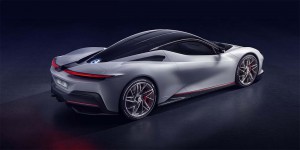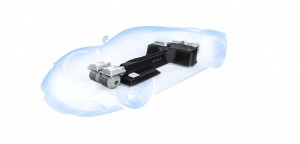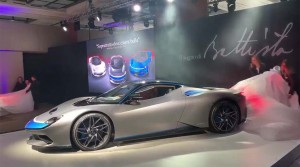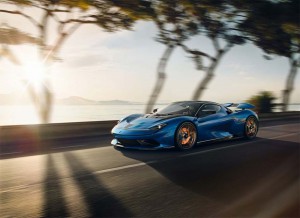There are plenty of skeptics when it comes to battery-electric vehicles, but resistance seems to be fading among serious performance fans, and a quick tour of this week’s Geneva Motor Show may help explain why.
Among the fastest and most powerful cars making their debut, the majority use some form of battery-based technology, including plug-ins like the Aston Martin AM RB 003, and the all-electric Pininfarina Battista.
The first battery supercar from the legendary Italian design house, the Battista will produce a jaw-dropping 1,900 horsepower and 1,696 pound-feet of torque, making it one of the most powerful, street-legal vehicles ever unleashed. How fast? Pininfarina claims it will hit 60 in less than two seconds and top out at 217 mph.
More precisely, Automobili Pininfarina CEO Michael Perschke noted that his company will initially release a version of the Battista that has been speed limited for safety reasons. But, he added, “beyond that there will a special track package.” The company hasn’t said how much faster that version will be able to go.
(Live from Geneva! Click Here for our complete show coverage.)
The Battista is the sort of hypercar likely to help put Pininfarina back in the spotlight. The company had gone through some serious troubles during the past decade, nearly collapsing under a mountain of debt. It was acquired in 2016 by the Indian automaker Mahindra & Mahindra and has been pushing to rebuild its once lofty reputation.
The Battista is actually the result of a cooperative venture teaming the design house up with Croatian-based Rimac which has itself produced a series of obscenely fast electric hypercars like the Concept Two which debuted in Geneva a year ago. The Pininfarina model essentially borrows the Rimac powertrain.
The good news about electric motors is that they produce their maximum torque the moment they start spinning, unlike an internal combustion engine which needs to rev up before reaching maximum output.
According to Perschke, that means the Automobili Pininfarina Battista is fast enough to hit 300 kmh, or 186 mph, faster than an F-16 fighter jet.
The hypercar has the sort of eye-grabbing design one would expect from Pininfarina, but here, form and function must go together. Aerodynamics play a critical role at the upper end of the Battista’s range, both by reducing drag and providing the downforce necessary to hold it onto the ground. Unlike conventional, gas-powered supercars, there’s no need to feed air into the engine, though the batteries, motors, electronic control systems and brakes must all be cooled.

The scissor doors comprise one of the most striking features of the Battista, but the functional rear wing makes a real impact.
(Click Here for more about Pininfarina’s electric car efforts.)
The scissor doors comprise one of the most striking features of the Battista, but for those focused on function, there’s also the active rear wing that automatically adjusts itself depending upon the vehicle’s speed. During high-speed runs, it helps increase downforce, but when it’s time to slow down, the wing also serves as an air brake to supplement Battista’s massive, 390 mm carbon ceramic six-piston brakes.
There are four separate motors on Battista, one for each wheel, a layout that allows for electric torque vectoring. Going into corners, the outer wheels turn slightly faster to assist in steering.
The motors draw energy from a 120 kilowatt-hour lithium-ion battery pack, about 20% bigger than the largest currently offered by Tesla. Under less aggressive driving conditions, that should be enough to travel about 280 miles per charge, though owners would have to expect far shorter runs if they’re pushing the Battista to its limits.

The motors draw energy from a 120 kilowatt-hour lithium-ion battery pack, about 20% bigger than the largest currently offered by Tesla.
As for charging time, Pininfarina hasn’t said. It would likely take a couple hours using a Level 3 fast charger, depending upon how much power it can put out. Using a 240-volt Level 2 charger would take about a half-day, based on what the 100 kWh Tesla batteries require.
(To see more about Ferrari’s new F8 Tributo, Click Here.)
Named for Pininfarina’s founder, the Battista won’t come cheap, the company announcing a price tag of $2.2 million. Despite that, company officials say 40% of the 150 models they plan to build have already been spoken for – 70% of those earmarked for the U.S. where owners will find few places, even on track, where they can come close to pushing the Pininfarina Battista to its limits.


